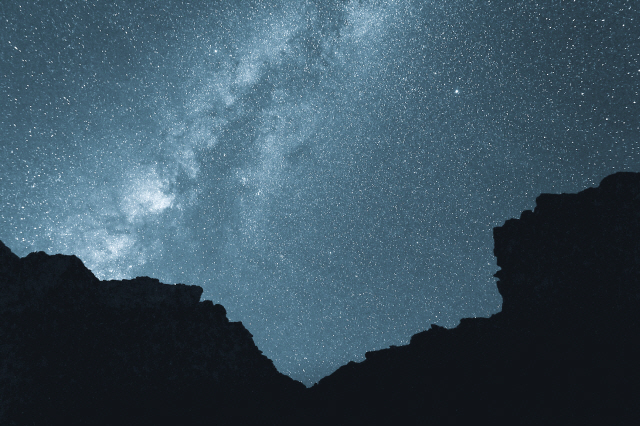
When was the last time that you viewed a star-studded night sky?
In Seoul and other major cities, chances are that you have not seen one for many years. And perhaps you never will.
A starry night is becoming like an endangered species here and elsewhere in the developed world, with neon signs, street lights, giant ad screens and decorations on office towers lighting up the night sky.
“Light pollution is, perhaps, the fastest-growing pollution these days. What makes it more serious is that not many realize that,” said Lim Jong-min, chief researcher at the Korea Institute for Lighting Technology.
In Korea, bright lights have long been considered a sign of a thriving city. Seoul has become one of the brightest cities in the world.
In Seoul and other major cities, chances are that you have not seen one for many years. And perhaps you never will.
A starry night is becoming like an endangered species here and elsewhere in the developed world, with neon signs, street lights, giant ad screens and decorations on office towers lighting up the night sky.
“Light pollution is, perhaps, the fastest-growing pollution these days. What makes it more serious is that not many realize that,” said Lim Jong-min, chief researcher at the Korea Institute for Lighting Technology.
In Korea, bright lights have long been considered a sign of a thriving city. Seoul has become one of the brightest cities in the world.

A survey by a local civic group found over 65 percent of some 1,730 commercial facilities in 10 major cities, including Seoul, left their outdoor shop signs on after closing time.
“The overlit cities are one aspect of Koreans’ energy-loving lifestyle. Even hospitals that do not operate emergency rooms turn lights on 24 hours,” said Chung Hee-jung, the secretary-general at Korea NGOs’ Energy Network.
Her organization, aside from its annual survey on excess lighting at night, has been leading a public campaign, “Turn out the lights and let the stars shine.”
In Western countries, the dark-sky movement emerged in the 1980s as concerned people campaigned to reduce the amount of light pollution. The non-profit International Dark-Sky Association is one related advocate.
Other then for the loss of stars from view, light pollution or excess artificial lighting at nighttime are concerns on many fronts: energy wastage, health and effects on wildlife.
Studies have shown that it affects the body’s circadian rhythms, disrupts sleep and increases stress. It also has a far-reaching impact on wildlife. Bright lights from cities disorient migratory birds, which depend on stars to navigate, causing millions annually to meet their deaths against the lit-up windows of buildings.
A recent U.S. study found that bright city lights exacerbate air pollution by interfering with nightly cleansing chemical reactions.
Yet, here in Korea, the concept of light pollution is pretty new.
In February this year, Korea’s parliament passed the country’s first-ever legislation on light pollution, aiming to control the use of artificial lights at night.
The law will take effect next February, and the Environmental Ministry is currently working on a set of ordinances for its implementation.
Low public awareness still remains as a challenge.
“It is not about turning off the lights and living in the dark,” said Kim Beop-jeong, an official at the environmental ministry in charge of formulating measures on light pollution.
“It is about finding a better use of artificial lighting so that mankind and wildlife can live in a more pleasant environment,” he said.
The ministry is moving to introduce a five year-year grace period before it starts imposing fines and other punitive measures on those responsible for light pollution, the official added.
In the meantime, a public campaign is planned to raise public awareness on the negative effect of light pollution.
“My son doesn’t know about the Milky Way, because he has never seen it in his life,” said Lim of the lighting technology institute. “The movement is about bringing stars back for our children.”
What is light pollution?
Light pollution is caused by stray artificial light from sources that are too bright, poorly aimed or both. The four most common types of light pollution are:
Sky glow: bright halos over urban, suburban and some rural areas at night due to outside lighting
Glare: light that shines horizontally and directly into a person’s eyes
Light trespass: unwanted artificial light (floodlights, security lights, streetlights) that spills onto property which would otherwise be dark
Clutter: bright, confusing and excessive groupings of light sources, commonly found in overly lit urban areas. The proliferation of clutter contributes to urban sky glow, trespass and glare.
By Lee Sun-young (milaya@heraldcorp.com)
-
Articles by Korea Herald








![[Graphic News] More Koreans say they plan long-distance trips this year](http://res.heraldm.com/phpwas/restmb_idxmake.php?idx=644&simg=/content/image/2024/04/17/20240417050828_0.gif&u=)
![[KH Explains] Hyundai's full hybrid edge to pay off amid slow transition to pure EVs](http://res.heraldm.com/phpwas/restmb_idxmake.php?idx=644&simg=/content/image/2024/04/18/20240418050645_0.jpg&u=20240419100350)








![[KH Explains] Hyundai's full hybrid edge to pay off amid slow transition to pure EVs](http://res.heraldm.com/phpwas/restmb_idxmake.php?idx=652&simg=/content/image/2024/04/18/20240418050645_0.jpg&u=20240419100350)

![[Today’s K-pop] Illit drops debut single remix](http://res.heraldm.com/phpwas/restmb_idxmake.php?idx=642&simg=/content/image/2024/04/19/20240419050612_0.jpg&u=)